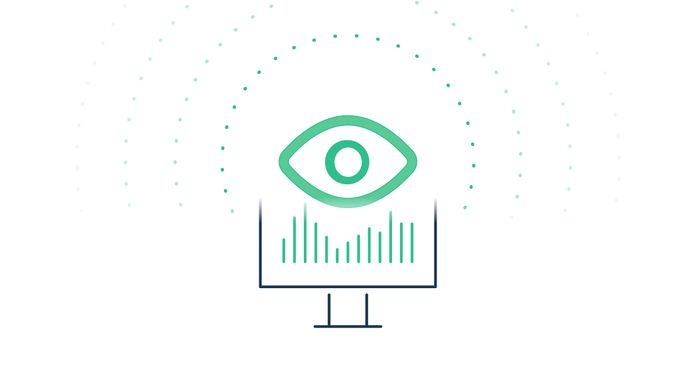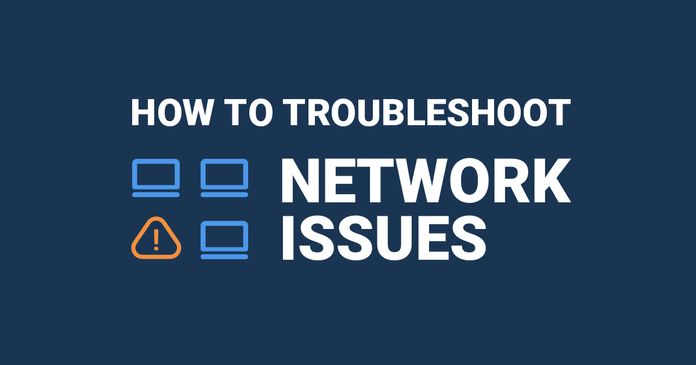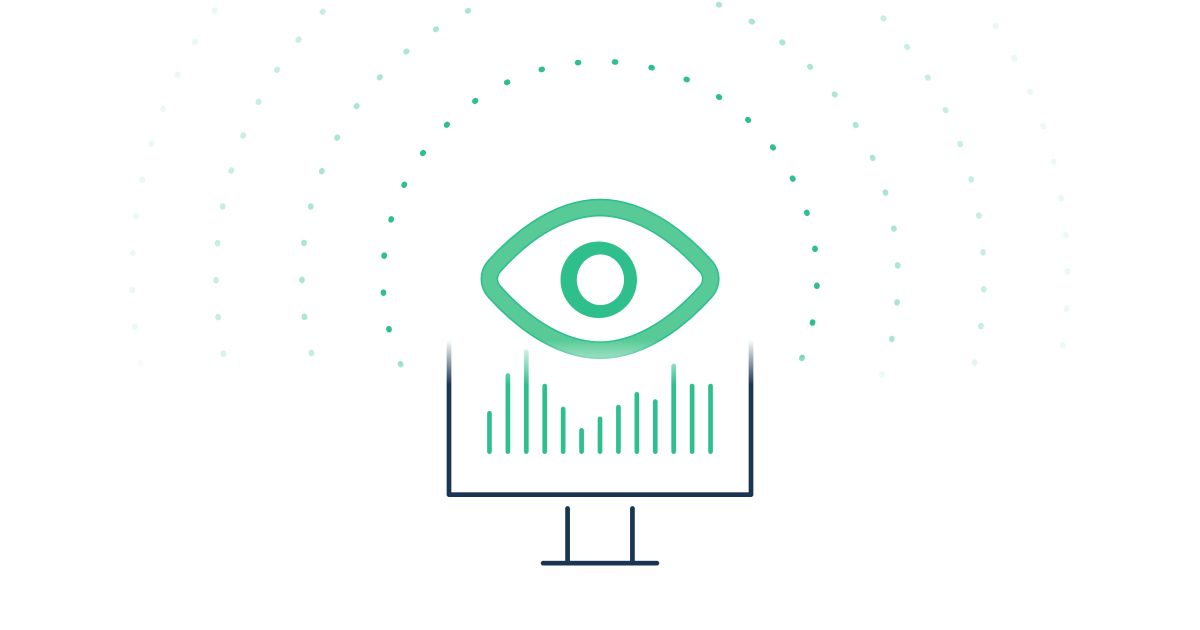Table of Contents
Table of Contents
As an IT professional or network administrator, you understand the critical role that comprehensive network visibility plays in maintaining a robust and efficient system. This is where SNMP (Simple Network Management Protocol) comes into the spotlight, offering a powerful solution to monitor, manage, and streamline your network infrastructure.
In this blog post, we will delve into the world of SNMP network monitoring, exploring how it empowers IT pros and network admins to gain unparalleled insights into their networks. We'll uncover the inner workings of SNMP, discover the benefits it offers, and explore practical strategies to harness its full potential for seamless network visibility. Whether you're already familiar with SNMP or just getting started, this guide aims to equip you with the knowledge and tools you need to take your network monitoring game to new heights.
From monitoring critical devices to gathering crucial network statistics, SNMP network monitoring provides a centralized and standardized approach that simplifies the complex task of network management. So, fasten your seatbelt and get ready to embark on a journey that will help you streamline your SNMP network monitoring practices, giving you the upper hand in maintaining a resilient and future-ready network infrastructure.
Let's dive in!
SNMP (Simple Network Management Protocol) Network Monitoring is a method used to monitor and manage network devices and systems within an IT infrastructure. It is a widely used protocol that facilitates the exchange of information between network devices and a central management system.
SNMP enables network administrators and IT professionals to gather valuable data, monitor the health and performance of network devices, and make informed decisions to ensure the network operates efficiently.
Now let’s take an in-depth look at the inner workings of SNMP Network Monitoring. Understanding the mechanics behind this powerful network monitoring protocol is essential for IT professionals and network administrators to harness its full potential. From the fundamental components to the data collection process and event-driven monitoring, we'll explore each aspect step-by-step.
SNMP consists of three primary components: managed devices, agents, and network management systems (NMS).
- Managed Devices: These are the network devices, such as routers, switches, servers, printers, and other network-enabled devices that need to be monitored.
- Agents: An agent is a software module residing on each managed device. It collects and stores data about the device's performance and status.
- Network Management System (NMS): The NMS is the central software responsible for collecting and processing data from the managed devices through SNMP. It provides a user interface for network administrators to view and analyze the data.
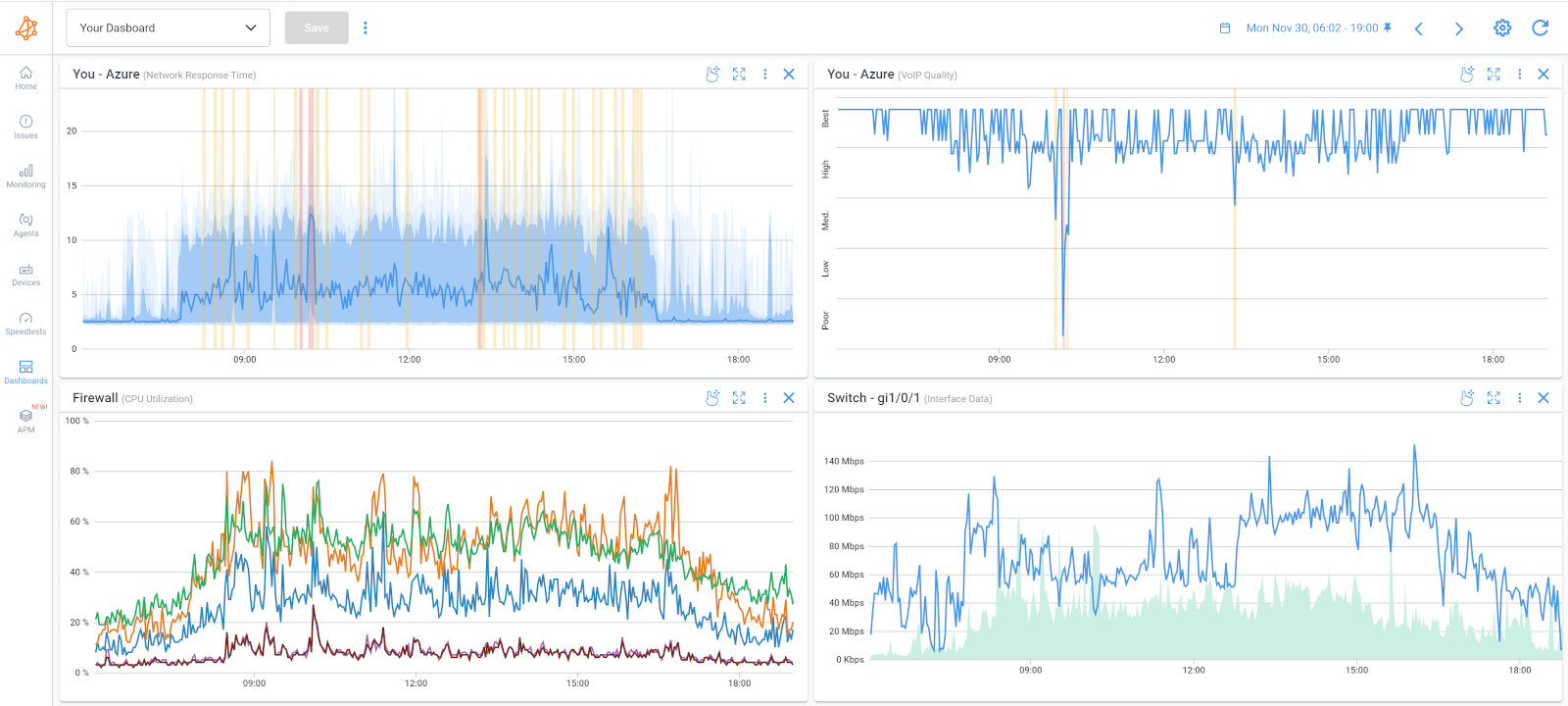

SNMP Network Monitoring agents on managed devices continuously monitor various parameters, such as:
- CPU Utilization: The SNMP agent tracks the CPU usage of the managed device, indicating how much of the processor's capacity is currently in use. High CPU utilization can lead to performance issues and may indicate the need for resource optimization or hardware upgrades.
- Memory Usage: Monitoring memory usage helps determine how much RAM is being used by the device. Memory-related issues can affect system stability, and SNMP provides insight into memory consumption trends.
- Network Traffic: SNMP agents keep track of incoming and outgoing network traffic on the device's interfaces. This information helps identify network congestion, bandwidth usage patterns, and potential bottlenecks.
- Interface Status: The status of network interfaces, such as Ethernet ports, is closely monitored. SNMP can report whether interfaces are up or down, which is crucial for detecting connectivity problems and ensuring smooth data transmission.
- Packet Errors: The agents keep a count of packets that encounter errors during transmission or reception. Monitoring packet errors helps troubleshoot network issues and assess the overall data quality.
- Device Uptime: SNMP agents track the device's uptime, providing information about how long the device has been running without any reboots or interruptions. This data is valuable for assessing device reliability and performance stability.
- Temperature and Environmental Parameters: Some SNMP agents can also monitor environmental factors like temperature, humidity, and power supply status. This information is especially relevant for data centers and critical infrastructure to ensure optimal operating conditions.
- Disk Usage: For devices with storage capabilities, SNMP can monitor disk usage and provide alerts when disk space is reaching critical levels.
By continuously monitoring these parameters and more, SNMP agents create a comprehensive snapshot of the managed device's health and performance. This data is organized into a standardized structure called the Management Information Base (MIB). The MIB serves as a repository of SNMP-manageable objects, each representing a specific parameter of the device. The network management system (NMS) can then
The NMS communicates with the SNMP agents on managed devices using specific SNMP operations, primarily GET (to request data) and SET (to change configuration). The NMS periodically polls the agents to gather updated information about the devices.
Looking for the perfect Network Monitoring/ Network Managing System for your SNMP Network Monitoring needs?

Unleash the power of Obkio's Network Monitoring tool and transform your SNMP Network Monitoring game! Get real-time insights, conquer network challenges, and ensure your network's success with ease.
- Real-time Insights: Get instant visibility into your network's health and performance, empowering you to make data-driven decisions in real-time.
- Simplified SNMP Monitoring: Obkio's user-friendly interface and streamlined setup make SNMP monitoring a breeze, even for those new to the protocol.
- Proactive Issue Detection: Identify potential bottlenecks and network anomalies early on, so you can address them before they impact your users or applications.
- Customizable Alerts: Set up personalized network monitoring alerts to be notified of critical events, ensuring you never miss important network changes or issues.
- Comprehensive Reporting: Access detailed reports and historical data to analyze trends, optimize network resources, and plan for future growth.
- Multi-vendor Support: Obkio's tool is compatible with a wide range of network devices, making it suitable for diverse network environments.
- Cloud-based Monitoring: Monitor your network from anywhere with Obkio's cloud-based solution, enabling remote management and troubleshooting.

SNMP Network Monitoring supports event-driven monitoring, a proactive approach that allows administrators to receive timely alerts when specific conditions or events occur in the network.
This feature enables faster incident response, ensuring that potential issues are addressed promptly before they escalate and impact network performance or user experience.
Administrators can set thresholds for various parameters, such as CPU utilization, bandwidth usage, or device temperature. When these thresholds are exceeded or specific events, such as link status changes or critical errors, occur, the SNMP agents on the managed devices recognize them as trigger points.
Collecting and analyzing SNMP data empowers network administrators with valuable insights that help them understand the health and performance of the network comprehensively. Here's how this process contributes to optimizing network resources and enhancing overall network performance:
- Comprehensive Network Visibility: SNMP network monitoring provides a holistic view of the entire network, including critical devices and infrastructure components. This visibility allows administrators to understand the interconnections and dependencies within the network, leading to better planning and resource allocation.
- Identifying Bottlenecks: By analyzing SNMP network monitoring metrics like network traffic, CPU utilization, and interface statistics, administrators can pinpoint bottlenecks that may be hindering optimal network performance. This identification helps them focus their efforts on the areas that require immediate attention.
- Diagnosing Issues: SNMP network monitoring data facilitates network troubleshooting by providing real-time information about the network's status and performance. When issues arise, administrators can quickly identify the affected devices, interfaces, or systems, speeding up the diagnostic process.
- Performance Optimization: Armed with SNMP network monitoring data, administrators can fine-tune network configurations and optimize resource allocation to ensure that critical applications and services receive the necessary bandwidth and priority.
- Capacity Planning: SNMP network monitoring data reveals historical trends and usage patterns, allowing administrators to plan for future growth and anticipate when additional network resources may be required.
- Security Enhancements: SNMP network monitoring data also aids in detecting and mitigating security threats. Unusual patterns or suspicious activities can be flagged through SNMP monitoring, enabling administrators to take swift action to protect the network.
- Proactive Maintenance: By continuously monitoring SNMP network monitoring data, administrators can detect subtle changes in network behaviour and address potential issues before they escalate into major problems, reducing downtime and service disruptions.
- Data-Driven Decision Making: SNMP network monitoring data provides tangible metrics that support data-driven decision-making processes. Administrators can use this data to justify investments in network upgrades, validate the success of optimization efforts, and communicate network performance to stakeholders.
The terms "SNMP Network Monitoring" and "SNMP Monitoring" are often used interchangeably, but there can be a slight difference in their connotations depending on the context. In general, both phrases refer to the use of the Simple Network Management Protocol (SNMP) to monitor and manage network devices and systems. However, the context in which these terms are used may imply different aspects of SNMP usage:
SNMP Monitoring typically refers to the overall practice of using SNMP to monitor various aspects of network devices. It encompasses the entire process of collecting data from SNMP-enabled devices, using SNMP operations (like GET and SET) to query and configure devices, and receiving SNMP traps for event-driven monitoring. SNMP Monitoring is a broad term that covers the entire concept of using SNMP for network management and monitoring purposes.
SNMP Network Monitoring narrows the focus down to specifically monitoring the network itself using SNMP. It emphasizes the use of SNMP to monitor the network infrastructure, including routers, switches, and other network devices.
SNMP Network Monitoring involves gathering data about network performance, bandwidth utilization, interface status, and other network-specific metrics. It is particularly relevant for IT professionals and network administrators who want to gain insights into the health and performance of the entire network.
In summary, while both terms generally refer to using SNMP for monitoring purposes, "SNMP Monitoring" is a broader term encompassing the use of SNMP for monitoring various aspects of devices and systems, while "SNMP Network Monitoring" specifically emphasizes the monitoring of the network infrastructure using SNMP.
The specific meaning can depend on the context in which the terms are used, but in practical use, they are often used interchangeably to describe SNMP-based monitoring practices.
SNMP Network Monitoring can be used to monitor a wide range of network devices and equipment. As long as the device supports SNMP (Simple Network Management Protocol), it can be integrated into an SNMP Network Monitoring system.
Here are some common network devices that can be monitored using SNMP:
Monitoring routers ensures optimal traffic flow, detects potential bottlenecks, and helps maintain stable connectivity across the network. SNMP network monitoring allows monitoring of router performance metrics like:
- CPU Utilization
- Memory Usage
- Interface Traffic (Inbound/Outbound)
- Interface Errors and Discards
- Routing Table Status
- BGP/OSPF Neighbors and Status
- ICMP Response Time (ping)
Switch monitoring helps identify port-level issues, optimizes network performance, and ensures efficient traffic distribution. SNMP network monitoring provides insights into:
- Port Status (Up/Down)
- Port Traffic (Inbound/Outbound)
- Port Errors and Discards
- VLAN Information
- MAC Address Table
- Switch CPU and Memory Usage
Firewall monitoring ensures network security, timely detection of threats, and effective management of access policies.SNMP network monitoring can be used to monitor:
- Firewall Status (Up/Down)
- Active Connections
- VPN Tunnels and Status
- CPU and Memory Usage
- Firewall Rules and Policies
- Network Address Translation (NAT) Status
Monitoring load balancers optimizes resource allocation, ensures even distribution of network traffic, and prevents server overload. SNMP network monitoring monitors:
- Server Health and Status
- Active Connections per Server
- Load Balancer CPU and Memory Usage
- Load Balancer Throughput
- Session Persistence and Stickiness
AP monitoring ensures consistent wireless connectivity, identifies coverage gaps, and maintains a seamless user experience. SNMP network monitoring can monitor:
- AP Status (Up/Down)
- Number of Associated Clients
- Signal Strength and Quality
- Wireless Channel Utilization
- Data Rates and Retransmissions
- AP Temperature
Server monitoring helps prevent downtime, identifies resource constraints, and ensures high availability of critical services. SNMP network monitoring allows monitoring of:
- CPU Utilization
- Memory Usage
- Disk Space Utilization
- Network Interface Traffic
- Server Temperature
- Power Supply Status
- Service Status (e.g., HTTP, FTP, etc.)
Printer monitoring ensures timely maintenance, minimizes print disruptions, and optimizes consumable usage. SNMP network monitoring can track:
- Printer Status (Online/Offline)
- Paper Levels
- Ink/Toner Levels
- Print Jobs in Queue
- Error Messages and Alerts
Monitoring UPS devices safeguards against power failures, predicts battery health, and protects critical equipment.SNMP network monitoring can monitor:
- Battery Status (Charge Level, Runtime)
- Power Supply Status (AC/DC Input)
- Load on UPS
- Internal Temperature
- UPS Output Voltage
Monitoring environmental conditions helps prevent equipment damage, ensures optimal data center performance, and promotes energy efficiency. SNMP network monitoring can be used to monitor:
- Temperature
- Humidity
- Airflow
- Water Leakage
- Rack Door Open/Closed Status
NAS monitoring helps manage storage utilization, detects disk failures, and ensures data availability. SNMP network monitoring can provide insight into:
- Storage Usage and Capacity
- RAID Status and Health
- Disk Health and SMART Status
- Network Throughput
VoIP monitoring ensures high call quality, minimizes call drops, and optimizes voice communication across the network. SNMP network monitoring allows the monitoring of:
- VoIP Call Quality (MOS Score)
- Call Latency and Jitter
- Number of Active Calls
- VoIP Gateway Status
Monitoring IoT devices ensures their operational status, detects anomalies, and helps maintain a stable IoT ecosystem. Many IoT devices support SNMP, enabling monitoring of their status and performance.
- Device Status (Online/Offline)
- Sensor Readings (e.g., Temperature, Humidity)
- Power Usage
- Connectivity Status
SNMP is a versatile protocol, and its wide adoption makes it compatible with a vast array of network devices, making SNMP Network Monitoring a powerful and flexible solution for network administrators and IT professionals to gain valuable insights into their network infrastructure.
So how can you actually deploy this powerful monitoring technique - let’s get into that!
While SNMP was originally intended to be simple, its complexity has grown significantly over time. If you're not extensively familiar with SNMP or specialize in it, using and understanding it can be challenging.
Recognizing this overcomplication, Obkio’s Network Performance Monitoring tool set out to simplify SNMP network monitoring, placing a strong emphasis on network performance monitoring and troubleshooting.
With this simple solution, Obkio makes SNMP network monitoring, actually simple.
If you're exploring SNMP or looking for the perfect SNMP network monitoring tool, Obkio's Network Monitoring tool offers an easy and efficient solution through its Network Device Monitoring feature. Gain detailed insights into the health of your core network devices without unnecessary complexity.
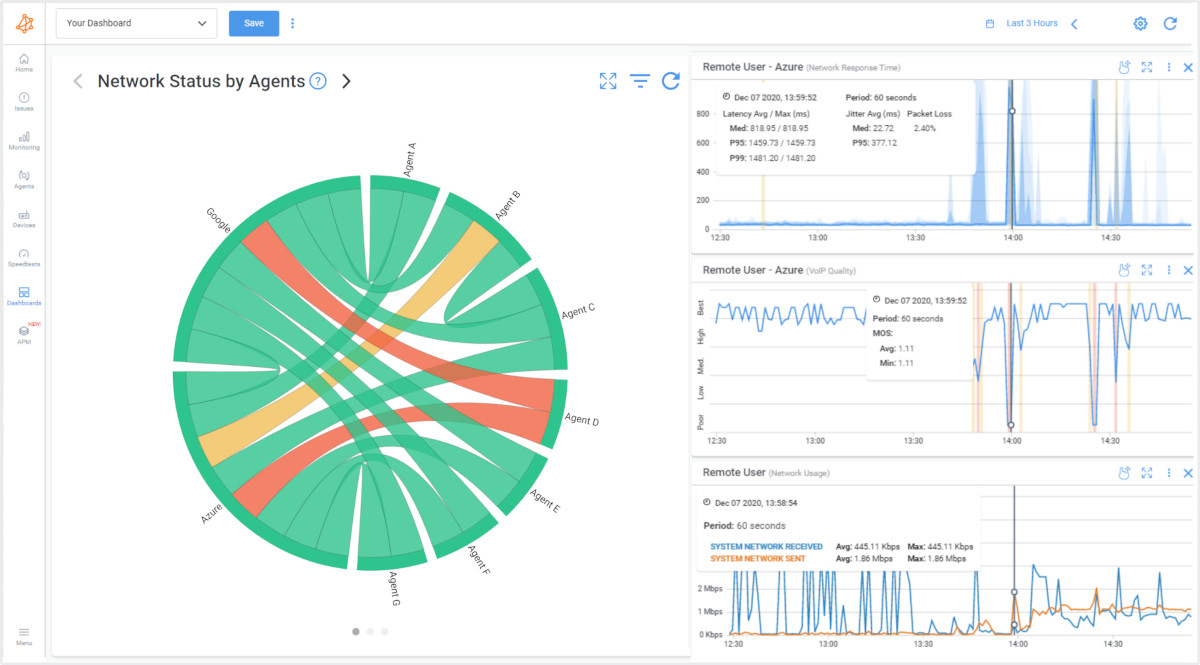
When combined with the end-to-end Network Performance Monitoring feature, Network Device Monitoring with SNMP Polling empowers IT teams to quickly and proactively identify issues with crucial devices like firewalls, routers, switches, and Wi-Fi access points.

To initiate SNMP network monitoring for your network devices, the first step is deploying at least one Network Monitoring Agent. Monitoring Agents are exclusive software designed by Obkio to oversee network performance in critical network locations, such as data centers, branch offices, and clouds. These Agents consistently generate synthetic traffic within your network, measuring performance through essential network metrics and detecting performance-related problems.
Deploying a Monitoring Agent is essential as it enables communication with your network device to measure its performance. For optimal results, we advise using the Agent that is closest to the device you intend to monitor.
When you sign up for Obkio, the Onboarding Wizard will automatically help you deploy:
- Local Agents (Windows, MacOS, Linux, Hardware) are installed at key network locations such as branch offices, data centers, and remote locations to monitor performance.
- Public Monitoring Agents are Agents installed in Service Provider networks (like AWS, Google, and Azure). They can be used to monitor the performance of any branch externally towards the Internet (without passing through the head office).
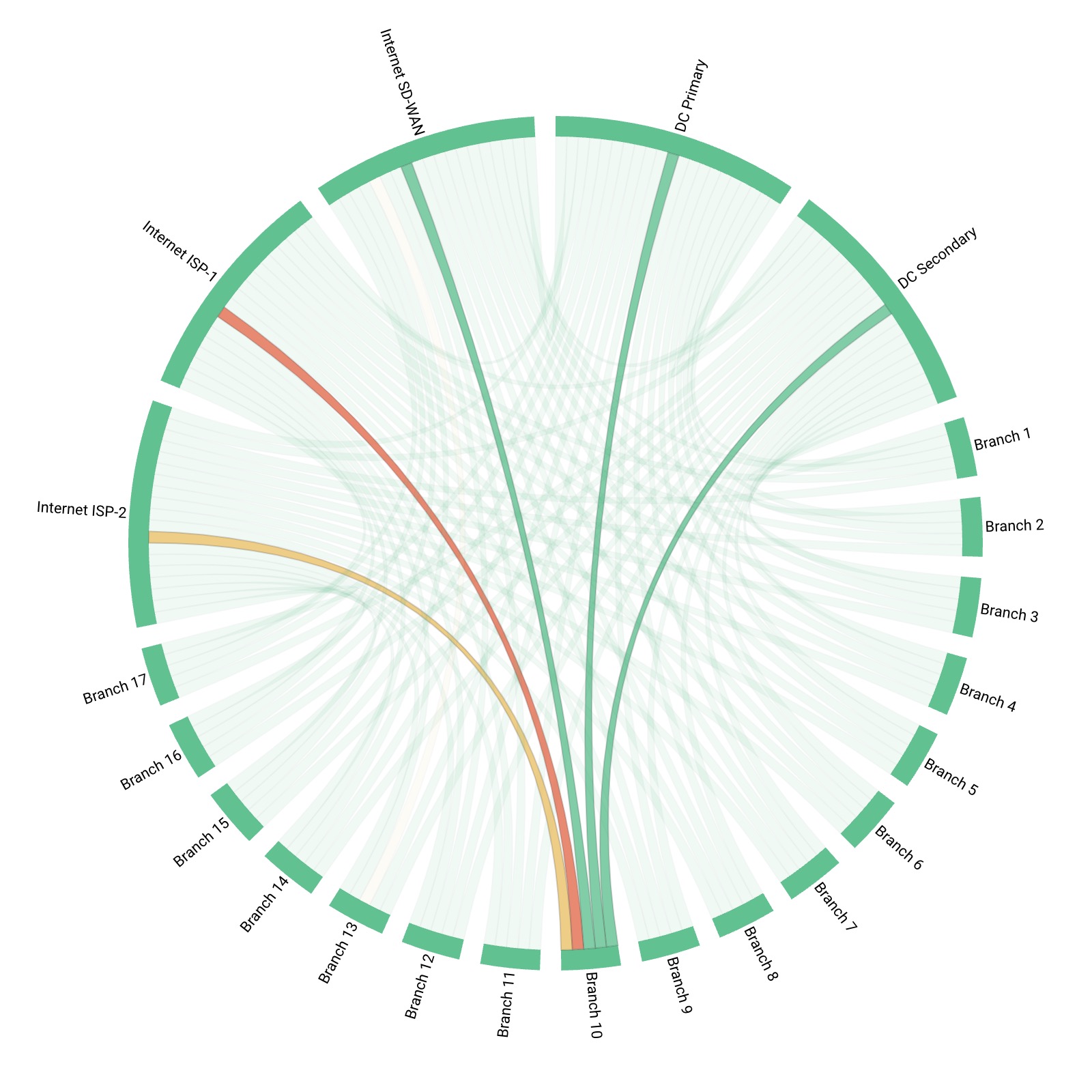
Many Network Device Monitoring tools, including Obkio, leverage SNMP network monitoring as part of their Network Device Monitoring features.
In Obkio's Network Performance Monitoring tool, SNMP requests are sent to devices, requesting specific metrics such as CPU usage, bandwidth utilization, network utilization or uptime. Once the device receives the request, it responds with the requested information, which is then sent back to Obkio's app.
Obkio's app collects and stores this information in a database for analysis and reporting purposes. By utilizing this data, Obkio can effectively identify issues, troubleshoot problems, and optimize network performance and device operation.
Before adding your network devices, you need to ensure that they support SNMP and rest assured that Obkio supports all versions of SNMP (v1, v2c, and v3). Additionally, read-only access is required for SNMP network monitoring. For further details on supported devices, you can find more information here.
SNMP Polling is performed at regular intervals, with Obkio sending requests to devices (e.g., every 30 seconds) and collecting responses over time to create a historical record of performance metrics. This approach enables tracking changes and identifying trends that may indicate potential issues or opportunities for optimization.
The advantage of using Obkio lies in its ability to perform SNMP polling through its Monitoring Agents, eliminating the need to establish VPNs between a centralized monitoring server and LANs where network devices are located. This streamlines the monitoring process and simplifies network management.
Learn about Network Device Monitoring to easily monitor performance of firewalls, routers & switches to identify problems like high CPU & bandwidth usage.
Learn more

After successfully installing your monitoring agents, you can begin SNMP network monitoring for your network devices by adding them to the Obkio App.
You don’t need any technical expertise in SNMP and OID Detection for this! Once you add your devices, Obkio’s network device monitoring feature adapts to any time of equipment.
For example, whether you’re using a Meraki router, Cisco, Fortinet or SonicWall - Obkio will collect the necessary information for that specific device in order to monitor it and identify performance issues.
After adding your network devices, Obkio's Network Device Monitoring features utilize Ultra-Fast Polling, occurring every 30 seconds. This significantly surpasses traditional software polling, which happens every 5 minutes, resulting in more precise results.
The higher polling frequency offered by Ultra-Fast Polling enables Obkio to detect short bursts of traffic (packet bursts) or CPU utilization that might affect network performance. By identifying the root cause of performance issues, this increased frequency helps in pinpointing problems accurately.
Traditional SNMP network monitoring tools poll every 5 minutes, which can obscure critical peaks that are valuable for diagnosing performance issues. However Obkio's approach offers enhanced visibility and aids in swiftly addressing network performance challenges.
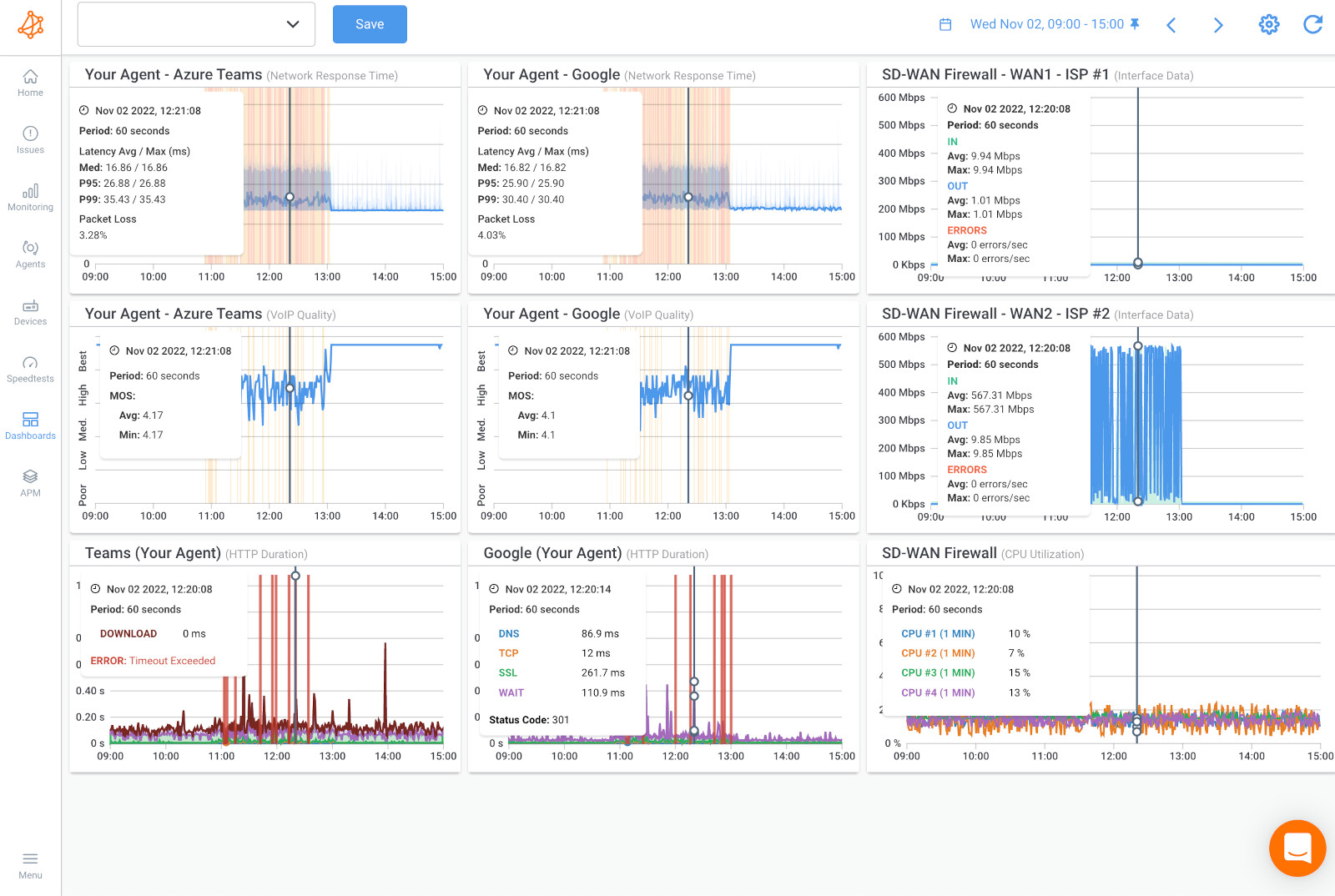

Once you've deployed SNMP Network Monitoring with Obkio and added your network devices, Obkio will continuously monitor your network and device performance. By actively measuring various metrics, Obkio identifies network issues that may impact both individual network devices and the network as a whole.
This ongoing monitoring ensures proactive management, timely issue detection, and effective optimization to maintain a stable and efficient network environment.
- Continuous Data Collection: Obkio's SNMP Network Monitoring uses Ultra-Fast Polling, measuring metrics from your network devices at incredibly frequent intervals of every 30 seconds. This continuous data collection creates a real-time stream of valuable information about your network's health and performance.
- Comprehensive Metric Analysis: Obkio measures network metrics that cover a wide range of aspects, including CPU utilization, memory usage, interface traffic, error rates, and more. Obkio's Network Monitoring platform analyzes this comprehensive data to create a detailed picture of your network's behaviour.
- Performance Baseline Establishment: With continuous monitoring, Obkio establishes a performance baseline for your network and individual devices. This network baseline represents the expected and normal performance patterns, allowing deviations to be readily identified.
- Proactive Issue Detection: By comparing current metrics to the established baseline, Obkio can proactively detect anomalies and deviations in network performance. Unusual spikes or drops in metrics trigger alerts, indicating potential issues that require attention.
- Timely Issue Resolution: When network issues are detected, Obkio's SNMP Network Monitoring provides timely alerts to network administrators and IT teams. These alerts contain pertinent details about the problem, such as the affected device or interface, enabling swift network troubleshooting and resolution.
- Network-wide Impact Assessment: As Obkio continuously monitors the entire network, it can identify issues that affect the network as a whole. This capability is vital for detecting systemic problems that may arise due to misconfigurations, congestion, or other network-wide issues.
- Optimization Opportunities: Regular monitoring facilitates the identification of optimization opportunities within the network. By analyzing performance trends and patterns, Obkio helps administrators make informed decisions about network optimization strategies to enhance resource allocation and overall network efficiency.
- Historical Performance Analysis: The continuous monitoring data is also stored for historical analysis. This long-term data repository allows administrators to review past network performance, identify recurring issues, and track the effectiveness of implemented solutions.
In summary, Obkio's SNMP Network Monitoring ensures continuous surveillance of your network and network devices, providing real-time insights and proactive alerts for timely issue resolution.
By establishing performance baselines and analyzing comprehensive data, Obkio helps maintain a stable network environment and allows for ongoing optimization to meet the demands of your ever-evolving network infrastructure.

SNMP Network Monitoring provides a plethora of metrics that can be monitored to gain insights into network performance. The most important SNMP Network Monitoring metrics vary based on your specific network environment and monitoring objectives.
Earlier in the article, we discussed more specific metrics for each network device, but here are some of the most essential metrics that are commonly monitored:
- CPU Utilization: Monitoring the CPU utilization of network devices helps identify devices experiencing high processing loads that might affect overall network performance.
- Memory Usage: Keeping an eye on memory usage allows you to detect devices approaching memory limits that could impact their ability to function optimally.
- Interface Traffic (Inbound/Outbound): Monitoring interface traffic helps identify bandwidth usage patterns, potential bottlenecks, and areas where additional capacity may be required.
- Interface Errors and Discards: Monitoring interface errors and discards provides insight into the health of network links and helps detect issues affecting data integrity.
- Network Latency: Measuring network latency helps identify delays in data transmission, which can negatively impact application performance and user experience.
- Packet Loss: Monitoring packet loss assists in identifying network issues that might cause data loss and degraded application performance.
- Device Uptime: Tracking device uptime helps ensure the reliability and availability of network devices.
- Interface Status (Up/Down): Monitoring interface status allows quick detection of interface failures or disconnections.
- BGP/OSPF Neighbor Status: For routers participating in routing protocols like BGP and OSPF, monitoring neighbour status ensures stable routing and connectivity.
- VPN Tunnel Status: Monitoring VPN tunnel status helps ensure secure and reliable communication between remote locations.
- Wireless Signal Strength and Quality: For Wi-Fi networks, monitoring signal strength and quality assists in optimizing wireless coverage and addressing connectivity issues.
- Firewall Connections and Rules: Monitoring firewall connections and rules aids in detecting unauthorized access attempts and ensuring firewall security.
Once you’ve deployed Obkio and added your network devices, Obkio will begin continuously monitoring these key network device performance metrics that give you a complete overview of the health of your network devices
Remember, the importance of specific metrics depends on your network's architecture, traffic patterns, and the devices you are monitoring. Customizing SNMP Network Monitoring to focus on metrics relevant to your network's performance and operational requirements will provide the most valuable insights for proactive network management.
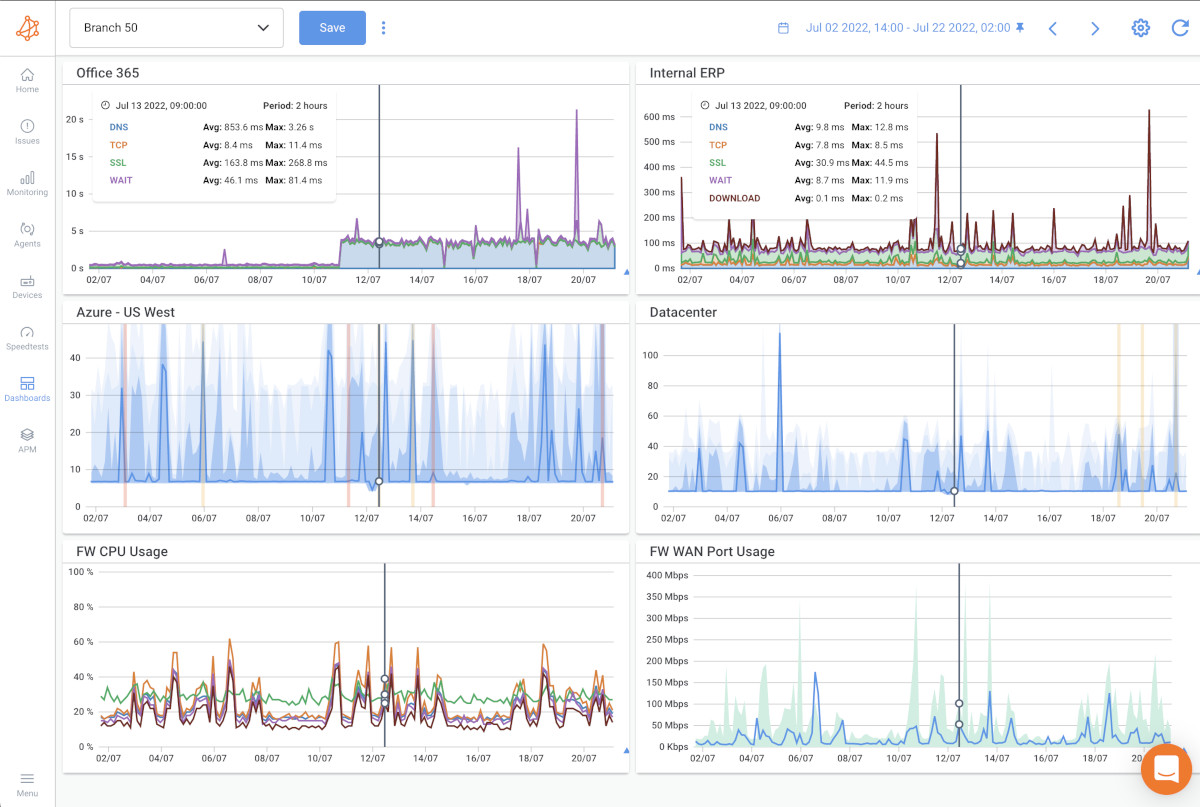
SNMP Network Monitoring is a powerful tool for uncovering a wide range of network issues.
By continuously monitoring network device performance with a Network & SNMP Network Monitoring too like Obkio, you can identify common issues related to network devices. For example, Obkio can detect issues such as high CPU usage, excessive packet loss, interface errors, CRC errors, and other performance issues that can impact the overall health and performance of your network.
Here are some of the most common network issues that can be detected and uncovered with SNMP Network Monitoring:
- High CPU Utilization: A high CPU usage indicates that the network device is handling heavy processing loads, which could be caused by excessive traffic, complex tasks, or CPU-intensive processes. High CPU utilization can lead to device performance degradation and unresponsiveness, affecting overall network efficiency.
- Memory Exhaustion: Monitoring memory usage helps identify devices with limited available memory. When memory gets close to capacity, the device may experience slowdowns, crashes, or even restarts. Memory exhaustion can lead to performance degradation and network instability.
- Bandwidth Congestion: SNMP monitoring of interface traffic reveals network segments experiencing high levels of data traffic. Bandwidth congestion can cause delays, packet loss, and reduced application performance for users accessing resources in those congested areas.
- Interface Errors and Discards: Interface errors and discards indicate problems with data transmission over network links. These errors may stem from physical issues, faulty cabling, or misconfigurations, potentially leading to data corruption or loss.
- Network Latency: SNMP Network Monitoring can uncover latency issues, which refer to the delay experienced by data packets as they travel through the network. High latency can negatively impact real-time applications, such as VoIP and video conferencing, causing communication disruptions and reduced user experience.
- Packet Loss: Monitoring packet loss helps identify network segments experiencing data loss. High packet loss rates can lead to retransmissions and application performance degradation, especially in data-sensitive applications.
- Device Downtime: SNMP monitoring of device uptime allows tracking of device availability. Frequent device downtime can disrupt network services, impact business operations, and require immediate attention.
- Network Congestion: By analyzing SNMP data on network traffic, administrators can identify network congestion in certain areas, which may require capacity upgrades or traffic optimization measures to maintain network performance.
- Routing Protocol Issues: Monitoring BGP/OSPF neighbour status can uncover issues with routing protocol adjacencies. Inconsistent or unstable routing protocols can lead to routing issues, causing connectivity problems and data routing inefficiencies.
- Firewall Connectivity and Rule Violations: SNMP Network Monitoring can detect firewall connectivity issues and unauthorized access attempts. Unintended firewall rule changes or misconfigurations may leave the network vulnerable to security breaches.
- VPN Tunnel Failures: Monitoring VPN tunnel status helps ensure secure and reliable communication between remote locations. VPN tunnel failures can lead to a loss of connectivity for remote users and branch offices.
- Wireless Coverage and Signal Quality: SNMP monitoring of wireless access points provides insights into signal coverage, signal strength, and signal quality. Poor wireless coverage or signal quality can result in connectivity issues for Wi-Fi users.
- Device Configuration Changes: SNMP Network Monitoring can help track and detect unauthorized or unexpected configuration changes on network devices. Sudden or unauthorized configuration changes may indicate security breaches or configuration errors that can impact network performance.
An SNMP Network Monitoring too like Obkio uses key network data to provide insights and alerts that can help you quickly identify and resolve network device issues, like the ones listed above.
For example, it may alert you if a device is experiencing high CPU usage, which could indicate a process or application that is consuming too many resources. Or it may alert you if a device is experiencing excessive packet loss, which could indicate network congestion, network overload or other issues.
Learn how to troubleshoot network issues by identifying where, what, why network problems occur with Network Troubleshooting tools.
Learn more

SNMP Network Monitoring offers a multitude of advantages for businesses across various industries. By providing real-time insights and proactive management capabilities, this monitoring approach empowers businesses to optimize network performance, enhance security, and ensure seamless operations.
Let’s explore the key benefits of implementing SNMP Network Monitoring, and how it positively impacts businesses of all sizes.
- Proactive Issue Detection: SNMP Network Monitoring continuously collects real-time data, allowing businesses to detect and address network issues before they impact operations. Proactive monitoring reduces downtime and minimizes the risk of critical system failures.
- Improved Network Performance: By monitoring key network metrics, businesses can identify and resolve bottlenecks, optimize resource allocation, and ensure optimal network performance. This leads to better user experiences and increased productivity.
- Enhanced Network Security: SNMP Network Monitoring helps detect suspicious activities, unauthorized access attempts, and potential security breaches. Timely alerts enable IT teams to respond swiftly and prevent security threats from escalating.
- Resource Optimization: Monitoring network devices and infrastructure allows businesses to identify underutilized resources and make informed decisions regarding capacity planning and resource allocation. This leads to cost savings and increased efficiency.
- Proper Capacity Planning: SNMP Network Monitoring provides insights into network traffic trends and usage patterns, facilitating accurate network capacity planning for future growth and scalability.
- Faster Issue Resolution: With real-time monitoring and alerts, IT teams can quickly pinpoint the root cause of network issues and resolve them efficiently, reducing mean time to resolution (MTTR).
- Business Continuity: SNMP Network Monitoring ensures high availability of critical network devices and services. By proactively addressing issues, businesses can maintain continuous operations and reduce network downtime.
- Compliance and Reporting: SNMP Network Monitoring provides comprehensive data for compliance reporting and auditing requirements, helping businesses meet regulatory standards and industry best practices.
- Insights for Network Upgrades: Monitoring network performance over time allows businesses to make data-driven decisions about network upgrades, ensuring investments align with actual needs.
- End-User Experience Improvement: By monitoring performance metrics from an end-user perspective, businesses can identify areas where network performance affects user experience, helping prioritize improvements for user satisfaction.
- Efficient Troubleshooting: SNMP Network Monitoring provides a wealth of data for troubleshooting network issues. It helps IT teams isolate problems and identify the specific devices or areas that require attention.
- Remote Monitoring and Management: SNMP Network Monitoring enables businesses to remotely monitor and manage geographically distributed networks with remote network monitoring, saving time and resources on-site visits.
- Vendor and SLA Management: Monitoring network devices provides valuable insights for evaluating vendor performance and ensuring compliance with service level agreements (SLAs) for SLA monitoring.
In summary, SNMP Network Monitoring delivers crucial visibility, proactive management, and performance optimization capabilities for businesses. It plays a vital role in ensuring network stability, security, and efficiency, ultimately contributing to overall business success and competitiveness.


Choosing the right SNMP network monitoring tool is crucial for the success of your network monitoring efforts. You need a tool that can proactively identify network issues affecting your network devices while giving you the insight you need to identify and troubleshoot them.
Here are some key factors to consider when choose the right SNMP network monitoring tool:
- Ease of Use and User Interface: Look for an SNMP network monitoring tool with an intuitive and user-friendly interface. A tool that is easy to navigate and configure will save time and reduce the learning curve for your IT team.
- Device Support: Ensure that the SNMP network monitoring tool supports a wide range of network devices, including routers, switches, firewalls, servers, and other critical infrastructure components. Verify that it is compatible with various SNMP versions (v1, v2c, v3) for comprehensive monitoring.
- Real-Time Monitoring and Alerts: The SNMP monitoring tool should offer real-time monitoring capabilities, continuously collecting data and providing immediate alerts for network issues. Alerts can be sent via email, SMS, or other communication channels to ensure prompt attention to critical events.
- Customizable Dashboards and Reports: Look for a tool that allows you to customize dashboards and reports based on your specific monitoring needs. Customization enables you to focus on the most relevant metrics and track the performance of key devices and interfaces.
- Scalability and Performance: Consider the scalability of the SNMP network monitoring tool to ensure it can handle the growing demands of your network. It should be capable of efficiently monitoring a large number of devices and handling high data volumes without compromising performance.
- Integration with Other Monitoring Systems: If your organization already uses other monitoring tools or a Network Management System (NMS), ensure that the SNMP network monitoring tool can integrate seamlessly with these existing systems to centralize monitoring efforts.
- Security and Authentication: Verify that the SNMP network monitoring tool offers robust security features, including support for SNMPv3 with authentication and encryption. This ensures that sensitive data remains protected during transmission.
- Historical Data and Trend Analysis: A good SNMP network monitoring tool should retain historical data, allowing you to analyze performance trends over time. Historical data is valuable for capacity planning, troubleshooting, and identifying long-term network patterns.
- Vendor Support and Updates: Check the vendor's reputation and customer support services. Regular updates and improvements to the monitoring tool are essential to keep it up-to-date and compatible with the latest technologies.
- Cost and Licensing Model: Evaluate the total cost of ownership, including upfront costs, ongoing licensing fees, and potential additional charges for extra features or support.
- Trial or Demo Version: Before committing to a specific SNMP network monitoring tool, consider testing a trial or demo version. This allows your IT team to assess the tool's performance, functionality, and ease of use in a real-world scenario.
SNMP Network Monitoring isn’t just about monitoring whether your network devices are up or down - it’s about monitoring network device performance and network performance as a whole.
When you’re looking for the right tool for your business, it’s important to find a tool that simplifies SNMP and empowers you to monitor device and network performance.
When it comes to the other SNMP Network Monitoring tools on the market, Obkio Device and SNMP Network Monitoring feature has three great advantages when compared with other SNMP monitoring tools on the market:
Unlike many device monitoring and SNMP network monitoring tools available, Obkio's SNMP network monitoring is designed to be user-friendly and straightforward. You don't need to possess specialized technical expertise in SNMP (Simple Network Management Protocol) or OID (Object Identifier) detection.

Obkio's device and SNMP network monitoring feature automatically adapts to the type of equipment you want to monitor, streamlining the setup process and making network monitoring accessible to users of all experience levels.
- CPU Usage
- Bandwidth Interface Errors
- Interface Errors
- Device Availability
- CRC Errors
- Interface Duplex
For Example: Whether you use a Meraki router, Cisco device, Fortinet firewall, or SonicWall appliance, Obkio's SNMP network monitoring seamlessly adapts to each equipment type. The monitoring feature intelligently gathers the relevant information specific to that particular equipment, enabling comprehensive device monitoring and efficient identification of performance issues.
With Obkio's versatile SNMP network monitoring, there is no need to worry about the complexities of configuring individual equipment or dealing with specialized settings for different devices. The system automatically recognizes the device type and acquires the necessary metrics through SNMP, ensuring a hassle-free setup and monitoring process
Obkio's SNMP network monitoring is powered by Ultra-Fast Polling, with a remarkable frequency of every 30 seconds. This advanced polling interval delivers highly precise results, far surpassing the traditional software polling, which typically occurs every 5 minutes.
The Ultra-Fast Polling allows for real-time monitoring, making it exceptionally effective in detecting short bursts of network traffic or CPU utilization that may impact network performance. By quickly identifying these fluctuations, IT teams can promptly address the root cause of performance issues, minimizing any potential disruption to network operations.
In contrast, traditional SNMP network monitoring tools, with less frequent polling intervals, tend to overlook these transient peaks that often provide crucial insights into network performance issues.
The continuous, fine-grained monitoring offered by Ultra-Fast Polling ensures that no performance fluctuations go unnoticed, empowering IT professionals to address network concerns proactively and optimize network efficiency.
Obkio eliminates the need for setting up VPNs between a centralized monitoring server and the LANs where network devices reside. This convenience arises from Obkio's ingenious approach, where all the polling is efficiently performed by its dedicated Network Monitoring Agents.
During the setup process, Obkio's Network Monitoring Agents are deployed within the LAN, continuously measuring end-to-end network performance. This seamless integration and agent-based network monitoring approach save MSPs valuable time and resources, making SNMP network monitoring deployment remarkably straightforward and hassle-free.
By leveraging Obkio's innovative solution, MSPs can swiftly and effectively implement SNMP network monitoring across their clients' networks without the complexity of establishing VPN connections. The centralized monitoring system, powered by Network Monitoring Agents, delivers comprehensive insights, ensuring optimal network performance and smooth network management for both the MSP and their clients.
SNMP network monitoring proves to be a valuable asset when it comes to overseeing the well-being and performance of SD-WAN (Software-Defined Wide Area Network) networks.
SD-WAN is a cutting-edge network technology empowering organizations to establish secure, agile connections among various locations, data centers, and cloud services via a unified network. Thanks to SD-WAN's intelligence, network traffic can be efficiently directed through multiple paths based on factors such as application type, network availability, and cost. This dynamic routing enhances network efficiency and flexibility, catering to the modern demands of businesses.
To ensure effective monitoring of SD-WAN, it becomes imperative to closely track essential network device metrics, including bandwidth usage, network traffic, and application performance across all routes. This is where SNMP network monitoring plays a pivotal role.
By leveraging SNMP to monitor key network device metrics on SD-WAN routers, switches, and other components, network administrators attain real-time visibility into the SD-WAN network's performance. SNMP furnishes comprehensive data on critical metrics such as network traffic, bandwidth utilization, CPU and memory usage, error rates, and more.
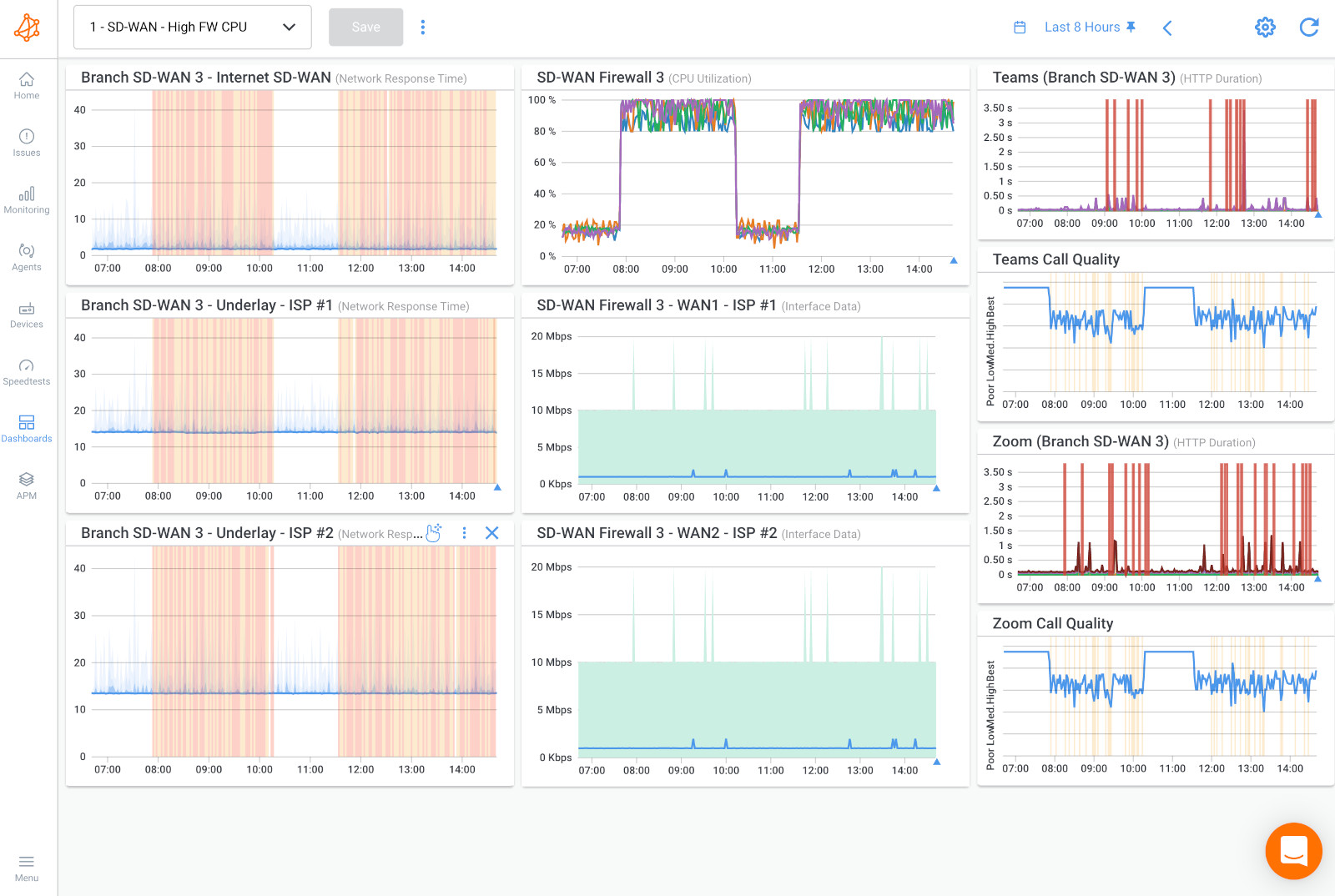
With this invaluable information, your business can proactively potential issues affecting SD-WAN performance, such as congestion, packet loss, or network latency.
Armed with these insights, and Obkio’s Network & SNMP Network Monitoring tool, network administrators can take proactive measures to optimize SD-WAN performance. This may involve adjusting routing policies, prioritizing critical applications, or augmenting network capacity to ensure an optimal and seamless SD-WAN experience for users.
With Obkio, you can monitor all SD-WAN networks like:
Note: You can also use SNMP to monitor Firewalls, Router and Switches for other technologies like Dual-WAN networks.
SNMP Network Monitoring offers businesses a powerful tool to optimize, secure, and maintain their network infrastructure effectively. From proactive issue detection to application performance monitoring and security management, SNMP Network Monitoring presents a myriad of use cases that cater to diverse business needs.
Let’s explore some key scenarios where businesses can leverage SNMP Network Monitoring to enhance network performance, streamline operations, and ensure a seamless user experience.
Businesses can use SNMP Network Monitoring to continuously track key network metrics and identify bottlenecks, congestion, or areas where additional resources are required. This allows for proactive network optimization and ensures efficient resource utilization.
SNMP Network Monitoring provides real-time insights into network health, enabling businesses to detect and address issues before they escalate. Timely alerts and notifications help IT teams swiftly troubleshoot problems and minimize downtime.
By monitoring network traffic trends and usage patterns, businesses can make informed decisions about capacity planning and network scalability. SNMP Network Monitoring helps ensure that network resources meet growing demands and future requirements..
Businesses can use SNMP Network Monitoring to monitor application-specific metrics and ensure optimal application performance. This is crucial for maintaining a seamless end-user experience and supporting critical business applications.
SNMP Network Monitoring helps businesses monitor network equipment from various vendors and assess vendor performance. It also assists in measuring adherence to Service Level Agreements (SLAs) for SLA monitoring and ensures service quality.
Learn about SLA monitoring & reporting using Network Monitoring to measure network, service performance, user experience & understand if SLAs are being met.
Learn more

For businesses with geographically distributed locations, SNMP Network Monitoring enables remote monitoring of network devices and performance. This eliminates the need for on-site visits, reducing costs and streamlining management.
SNMP Network Monitoring plays a crucial role in ensuring Quality of Service (QoS) for critical applications within a business's network. QoS refers to the ability to prioritize specific traffic or applications to guarantee the necessary network resources, such as bandwidth, latency, and packet loss, required for their optimal performance.
By monitoring QoS metrics, businesses can maintain a high level of service for essential applications, improving overall productivity and user satisfaction
When planning network upgrades or changes, SNMP Network Monitoring helps assess the impact on network performance and assists in evaluating the success of implemented changes.
For businesses with data centers, SNMP Network Monitoring provides real-time visibility into data center infrastructure, enabling proactive issue detection, capacity planning, and optimized resource allocation. It ensures security and compliance, optimizes application delivery, and contributes to business continuity. With remote monitoring capabilities, SNMP enhances data center efficiency and reliability.
SNMP Network Monitoring can be extended to monitor cloud services and their impact on the overall network performance. It empowers businesses to maintain a comprehensive view of their hybrid network or multi-cloud environments. By monitoring cloud resources, network traffic, application performance, security, and costs, businesses can make data-driven decisions to optimize cloud usage, ensure seamless operations, and deliver superior services to end-users.
In conclusion, SNMP Network Monitoring emerges as a powerful ally for businesses seeking to bolster their network performance, security, and overall operational efficiency. With its real-time visibility, proactive issue detection, and insightful metrics, SNMP empowers IT teams to stay one step ahead of network challenges and swiftly optimize resources for a seamless user experience.
However, to harness the full potential of SNMP Network Monitoring without the complexities, you need the right SNMP Network Monitoring tool for your business.

Enter Obkio - a user-friendly Network & SNMP network monitoring tool that simplifies SNMP for IT pros, while offering ultra-fast polling for precise and timely data. Take advantage of Obkio's Network Performance Monitoring, SNMP Monitoring, and other advanced features to gain unparalleled insights into your network infrastructure.
Don't wait! Embrace the power of SNMP Network Monitoring with Obkio today and elevate your network management to new heights. Get started with Obkio for free and unlock the true potential of your network!
- 14-day free trial of all premium features
- Deploy in just 10 minutes
- Monitor performance in all key network locations
- Measure real-time network metrics
- Identify and troubleshoot live network problems



























 Obkio Blog
Obkio Blog





